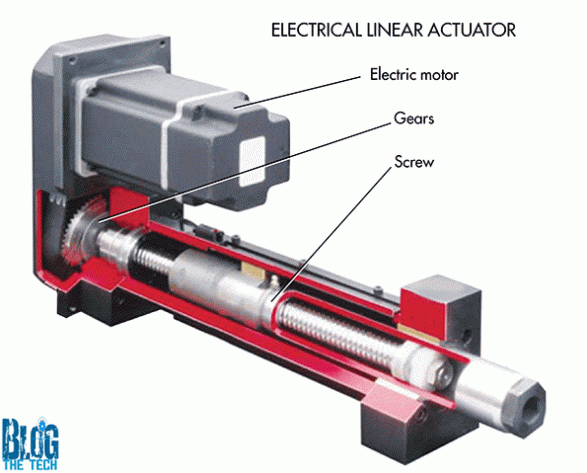This is the time of new technologies. People apply modern technologies in many spheres of their lives. Moreover, every day scientists create something new to make our life better and easier.
Nowadays, we can automate almost everything. Much automation requires linear actuators. This is a device with a simple mechanism.
There are many different ideas to automate your house, workplace, car, etc. However, do you know the working principle of these actuators?
Linear actuators: What is the main idea?
In general, linear actuators are devices, which are able to turn the rotational motion into linear motion. They are able to do this with the help of a linear force application.
The linear motor is modified to operate only in linear directions. Today, these actuators become more widespread and are applied to a wide range of machines. You can use them if your equipment requires producing a linear motion (for example, lifts, doors, printers, valves, etc.).
There are several types of linear actuators.
- The pneumatic actuator – the working principle of pneumatic actuators is that the gear and the cylinder are operated with the use of compressed air to monitor when they move and stop.
- The mechanical actuator – the working principle of the mechanical actuator is to transform energy via special things (people usually use wheels, screws, cam, axle, etc.).
- The hydraulic actuator – has a hollow cylinder for the moving piston. The working principle of the hydraulic actuator is that it works by applying unequal pressure to the piston to move it in a certain direction.
- The electric actuator – electric linear actuator working principle is that it runs directly on a current. You can control it remotely. They have a bit of a different structure. Here is the full structure https://www.progressiveautomations.com/inside-an-electric-linear-actuator/. It has fewer parts than other actuators.
- The magnetic actuator – the working principle of the magnetic actuator is that it uses the magnetic force to transform the electric current produced by the motor into the linear motion.
Linear Actuators: How Do They Work?
Basically, there is a big number of varied linear actuators. They can vary due to their size, model, function, characteristics, etc. In any way, they may have similar details. Usually, to answer the question “How do linear actuators work?”, we need to look through their structure.
The most important detail is the motor. With the help of it, the motion will be produced. There are different types of motors. They vary due to the applied force.
One more detail is the gear. People use them to attach the motor to the lead screw to move easily.
The cylinder is also one of the most important parts of the linear actuator, as it is able to contain the motion produced by the motor.
As for the lead screw, it is a very important detail of your linear actuator, as it is usually attached inside the cylinder and transforms the rotational motion into the linear motion.
Also, you need to bring the current to your actuator. It is possible to do with the help of DC brushes.
One more detail is the limit switch. You need to have this detail to limit the movement of your actuator.
So, how does an electric linear actuator work?
In general, DC brushes provide the linear actuator with the current, which gets to the motor. The motor, which is attached to the lead screw by the gear, starts to work. The cylinder contains the motion that is transformed from the rotational into the linear motion with the help of the lead screw.
The lead screw runs up/down and in such a way turns the rotational motion into the linear motion. Also, the stator and rotor mountings of the linear actuator start to function as the primary and secondary workings of the motor. These two workings make a field and it induces the motion. With the help of the limit switch, you can install some limits of movement.
Today, you can find out a lot of information on how electric linear actuators work. There are many different models that vary due to their size, power, strength, and characteristics. In any way, the working principle is the same for all models.

